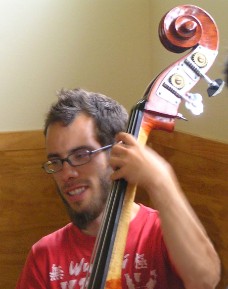theartsdesk in Colombo: Where Music Matters as East Meets West | reviews, news & interviews
theartsdesk in Colombo: Where Music Matters as East Meets West
theartsdesk in Colombo: Where Music Matters as East Meets West
Sri Lanka is longer on great percussionists than conductors
For hundreds of years now the island currently known as Sri Lanka has had a thriving musical culture (or cultures, not to politicise the issue). There’s been folk music for as long as there’ve been folks. The various strata of society have refined their ceremonial music, be it sacred or profane. Each ethnic group in each part of the island has hived off its own sub-genres over the centuries. And in the colonial era (eras) a whole new batch of influences arrived, fully formed, ready to be adopted wholesale or adapted and integrated for local use.
As we push on into the second decade of the 21st century, the land of Kandyan drumming and Sinhalese song is rapidly also becoming the land of Michael Jackson tribute concerts, X Factor-style talent shows, and generic cover-band clips on YouTube. But in amongst all the backwash of McCulture there’s some legitimate interchange happening. I decided to take a metaphorical stroll around the capital (a long one, spanning about six weeks) and compile a rough-and-ready survey of what Colombo’s music scene has going on now, and what it can – or should – look forward to in the future.
Musicmatters is a small but rapidly burgeoning new music school in Colombo’s Borella district, a venue for the city’s great many peripatetic music teachers to hold music lessons and inculcate the capital’s even greater number of enthusiastic young’uns (and not-so-young) with forms of music to which they might not otherwise have access. Founded and run by multifaceted local musician Eshantha Peiris, Musicmatters also doubles as a performance space (in which regard it is not so much small as tiny), and it was on a Sunday evening a couple of weeks back that I found myself sitting on the floor – neither cross-legged nor linen-clad, though this put me squarely in the minority – listening to two fusion bands strut their stuff.
 The first, The Compound Eye (for one night only), were essentially a jazz trio with an Eastern angle: Sumudi Suraweera on drums, Isaac Smith on bass (double) and Ranil Goonawardene on guitar. For my money Smith (pictured right) was the dynamo – by several feet the shortest bassist I’ve ever seen, and certainly the most energetic – but the Suraweera was so good I had to peer through the mob to be sure there weren’t two of him. Goonawardene’s melodies settled quickly into Kula Shaker repro-Seventies air-guitar stuff, and though this threatened to swamp the bassist’s George-Melly-on-speed demented agility, the three-way joust brought great things out of the musicians, especially in their eight-minute jungle-vibed freestyling of "Whole Lotta Love" (all pieces were long; no one did anything so banal as introduce their playlists; and neither band had singers: vocal quality is the weak link in all but the very best bands, and in this close acoustic anything above Louis Armstrong would have been unbearable).
The first, The Compound Eye (for one night only), were essentially a jazz trio with an Eastern angle: Sumudi Suraweera on drums, Isaac Smith on bass (double) and Ranil Goonawardene on guitar. For my money Smith (pictured right) was the dynamo – by several feet the shortest bassist I’ve ever seen, and certainly the most energetic – but the Suraweera was so good I had to peer through the mob to be sure there weren’t two of him. Goonawardene’s melodies settled quickly into Kula Shaker repro-Seventies air-guitar stuff, and though this threatened to swamp the bassist’s George-Melly-on-speed demented agility, the three-way joust brought great things out of the musicians, especially in their eight-minute jungle-vibed freestyling of "Whole Lotta Love" (all pieces were long; no one did anything so banal as introduce their playlists; and neither band had singers: vocal quality is the weak link in all but the very best bands, and in this close acoustic anything above Louis Armstrong would have been unbearable).
Thriloka (translation "three worlds"), an extant group of avowed fusionistas, were very definitely the other way around: a vibrant cross-cultural centre to the music, but with Western instruments. The result was a Doors-ish flavour (shaggy lead guitarist Sarani Perera doing a more-than-passable impression of Val Kilmer under the influence) and pieces practically symphonic in scope, with more sub-sections than "Paranoid Android", riffing through highly complex and variable time signatures. Peiris himself featured large on keyboard, his solo bursts ranging from baila melodies to Jools Holland lounge to a weird glockenspiel tone that sounded like being entombed in Tim Burton’s jewellery box. Elements of New York late-nite piano jazz morphed off into funk; here some gamelan, there a bit of zither; and who knew what else. Wide-ranging and deft and impressive, Thriloka were, at times, also a tad too hectic for me.
Watch Thriloka perform:
The drummers of both bands (all three of them) were first-rate instrumentalists in their own right. But undeniably the star of the evening was Thriloka’s Pabalu Wijegoonawardane on percussion (South Asian), who had more drums than I could count and none that I will attempt to name. So good was he that the crowd called for a drum-off between him and drummer Harshan Gallage by way of an encore. They were rewarded with a display of frankly incredible physical and musical virtuosity.
I came away with ringing ears and an unusual sense of personal involvement. Notwithstanding the cross-leggedness, the swaying hippies and the photographer with bandana who fancied himself as Dennis Hopper, the atmosphere of communal participation was notable and enjoyable, and not one you find in the realm of "classical" music unless it’s soundtracking through the Dolby Surround of the Odeon cineplex.
I had intended to play off the Thriloka gig against a Saturday-night Evening of Eastern Classical Music – Sri Lankan Anil Mihiripenna on flute and esraj, plus support – in the Barefoot café-bar, a centre for jazz stalwarts in Colombo (even if, as is often lamented, the interpretation of "jazz" there is rather too broad, and the repertoire insufficiently so), but…
While still parting with my Rs500 (£3, give or take) I realised I knew – know – next to nothing about Eastern classical music. Furthermore, the compound effects of happy hour ("the artist is also a man" - Leoncavallo) would barely have permitted legible handwriting, let alone detailed analysis. Anyway, I can vouch that it was very good, listening-wise, well worth the asking price, and that Pabalu Wijegoonawardane on the drums was once again stellar. My ears pricked up immediately I heard the patter of what sounded like five-and-a-half hands on cow skin.
The patter of rain, though, meant that we were all sitting under cover, a little distance from the performers. This may have robbed proceedings of a certain front-and-centre element; but it would have to be said, in any case, that sans the Western angle (ie regular metre, lyrics, the jazz-rock tradition of verse/chorus), the music very naturally adopted a background flavour. Probably something to do with the absence of electric guitar. And probably for the best. The Eastern tradition (if one can generalise) seems to have done a better job of finding that middle ground – the peaceful centre – between in-yer-face and elevator muzak.
I was back at Musicmatters a few days later, for a conducting masterclass conducted (hmm…) by Keiko Kobayashi, a prize-winning Japanese conductress who has studied, among others, under Seiji Ozawa. If I’d been offered the chance to hear a string quartet play fragments of Eine Kleine Nachtmusik 30 or 40 times over two-and-a-half hours I’d probably have politely declined. But hearing it tackled from a range of angles, with running commentary and the sheet music to hand, was perhaps as redeeming an experience as I’ve had since discovering, aged 15, that Romeo and Juliet was not, in fact, naff girly trash. If anything, I thought Kobayashi (pictured left) was a little too involved. In particular, I’d have liked to see more emphasis on the conductors fathoming their own errors and redirecting the "orchestra" with critical comment before she intervened. Learn by doing, etc. There were also, to be honest, a fair number of communication problems (I was once supposed to interview Ms Kobayashi on the subject of "music as universal language", a project aborted when it became clear we couldn’t understand each other). And watching a Japanese person tell someone else that he shouldn’t bob his head was, I felt, trespassing on the satirical.
If anything, I thought Kobayashi (pictured left) was a little too involved. In particular, I’d have liked to see more emphasis on the conductors fathoming their own errors and redirecting the "orchestra" with critical comment before she intervened. Learn by doing, etc. There were also, to be honest, a fair number of communication problems (I was once supposed to interview Ms Kobayashi on the subject of "music as universal language", a project aborted when it became clear we couldn’t understand each other). And watching a Japanese person tell someone else that he shouldn’t bob his head was, I felt, trespassing on the satirical.
But free exposure to an internationally experienced conductor represents an unmissable opportunity, and it was encouraging to see how many people turned up, in whatever capacity. The two-hour class offered a great deal – even to those of us just there as audience (the thrust of the thing was orchestral, but a couple of choral conductors had come along, on the off-chance of picking up some transferable advice) – and it was fulfilling to see the handful of aspiring maestros improve, minute by minute, under her tutelage. A couple were magically transformed from wooden puppets into real boys. Another stopped acting like he was already von Karajan. One went so far as to switch hands – a change which, with Kobayashi’s patient guidance, perturbed him for no more than a couple of minutes. When they started to get their rocks off over the respective length and heft of each other’s batons, I fled into the hot night.
Barring a little light bombing in 1942, there has not, historically, been a tremendous amount of cultural interchange between Japan and Sri Lanka/Ceylon/Zeylan/Serendib/etc. But the Japanese are making up for lost time, and this is Keiko Kobayashi’s third trip to the island as a guest conductor for the Symphony Orchestra of Sri Lanka, following their successful 2007 appearance in Japan at Asia Orchestra Week.
The gig itself – SOSL’s annual Premiere Concert, also featuring Japan’s Ado Kihara playing Weber’s first clarinet concerto – was hardly an unqualified triumph, but through no fault of the visiting stars. Kihara was excellent: too good, in fact, for the circumstances, and it showed. Kobayashi, despite typically wilful programming from the SOSL, held the unruly band together for the most part, making astute choices where the limitations of the SOSL threatened to reveal themselves (when the strings decided to hang, draw and quarter Barber’s Adagio there was little she could have been expected to do about it).
But while it is of course a good idea that outsiders (both conductors and soloists) come in - and the SOSL be exposed to top-flight expertise - the orchestra is, by all accounts, not what it was a decade or so back, and what is required to check that slide, most specifically, is a bolstering and sustaining of local talent. Ruefully I noted from the programme notes that of the four "resident principal conductors" on the SOSL’s books (variously, two violinists, a clarinettist and a horn-player from the orchestra’s own ranks), only one, Eshantha Peiris, will actually conduct any concerts in what is effectively the 2010-11 season (and that is the Christmas singalong gig). The remaining events are conducted by outsiders: British, German, Japanese.
It was additionally disappointing to realise, then, that only one of SOSL’s four staff conductors had been at Kobayashi’s masterclass (Peiris again). Given that there is not a single conducting tutor in the country – the situation being so dire that a church choirmaster recently asked if I would teach him (I declined) – this seems like an opportunity too casually wasted. The following week I sat in a coffee bar, talking about the Colombo music scene with a couple of friends, to the strains of Sri Lankan radio pop. There were problems, we agreed: a need for someone to train local performers and sound engineers; a shortage of decent venues; financial issues; a basic lack of objective criticism. But, we pondered, who knows? All manner of things might be well when the new Chinese-donated National Performing Arts Theatre (artist impression pictured above right) opens in mid-2011.
The following week I sat in a coffee bar, talking about the Colombo music scene with a couple of friends, to the strains of Sri Lankan radio pop. There were problems, we agreed: a need for someone to train local performers and sound engineers; a shortage of decent venues; financial issues; a basic lack of objective criticism. But, we pondered, who knows? All manner of things might be well when the new Chinese-donated National Performing Arts Theatre (artist impression pictured above right) opens in mid-2011.
The Chinese have had an interest, in both senses of the word, in Sri Lanka since back when they invented paper, fireworks and really big walls. But say what you like about Beijing’s agenda (and there’s as much to say about that here as anywhere else), if they’re going to sweeten their deals with a Rs3080m (£17m) freebie palace of culture – half the size of Wembley, by the look of it, and rising – who’s going to complain? It’s all to the good – and it's not like anyone else is going to build it.
- Musicmatters website
- Thriloka website
- Anil Mihiripenna website
- Find out more about the Symphony Orchestra of Sri Lanka
Watch the SOSL perform The Creation:

Add comment